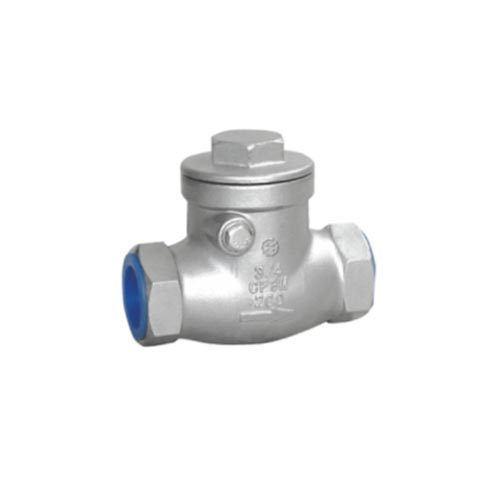閥門廣泛應(yīng)用于國計(jì)民生的各個(gè)領(lǐng)域,由于要適應(yīng)各種不同工況條件的要求,因而它的品種繁多數(shù)量巨大。我國的電動(dòng)執(zhí)行器制造業(yè)十分龐大,閥門廠家數(shù)以千計(jì),遍布,目前我國已成為全球閥門產(chǎn)量和市場(chǎng)需求量大的之一。但是我國的閥門行業(yè)大多為中小企業(yè),良莠不齊,年產(chǎn)值超億元的不到 10 家,即使與國內(nèi)其他機(jī)械行業(yè)相比,無論在裝備上還是技術(shù)水平上也存在很大的差距,具有獨(dú)立研究開發(fā)產(chǎn)品能力的單位很少,因而在大型石化、核電、油氣長輸管道線等重大工程項(xiàng)目中,配套的閥門目前主要還是靠進(jìn)口。
The valves are widely used in various fields of national economy and people's livelihood. Because they need to adapt to the requirements of various working conditions, they have a wide variety and a large number. China's electric actuator manufacturing industry is very large, with thousands of valve manufacturers all over the country. At present, China has become one of the countries with large valve output and market demand in the world. However, most of the valve industries in China are small and medium-sized enterprises, with mixed advantages and disadvantages. There are less than 10 enterprises with an annual output value of more than 100 million yuan. Even compared with other domestic machinery industries, there is a big gap in terms of equipment and technical level. There are few units with independent research and development capacity. Therefore, in large petrochemical, nuclear power, oil and gas long-distance pipeline and other major projects, supporting valves are mainly imported at present.
對(duì)于執(zhí)行機(jī)構(gòu)廣泛的定義是:一種能提供直線或旋轉(zhuǎn)運(yùn)動(dòng)的驅(qū)動(dòng)裝置,它利用某種驅(qū)動(dòng)能源并在某種控制信號(hào)作用下工作。執(zhí)行機(jī)構(gòu)使用液體、氣體、電力或其它能源并通過電機(jī)、氣缸或其它裝置將其轉(zhuǎn)化成驅(qū)動(dòng)作用。
The actuator is widely defined as a driving device that can provide linear or rotary motion, and it uses some driving energy and works under the action of some control signal. The actuator uses liquid, gas, electricity or other energy sources and converts them into driving action through motors, cylinders or other devices.
閥門電動(dòng)裝置基本類型有部分回轉(zhuǎn)(Part-Turn)、多回轉(zhuǎn)(Multi-Turn)及直行程(Linear)三種驅(qū)動(dòng)方式。
The basic types of valve electric device include three driving modes: part turn, multi turn and linear.

閥門電動(dòng)裝置可分為直行程和角行程兩大類,它是自動(dòng)控制系統(tǒng)中不可缺少的重要設(shè)備,其主要任務(wù)是將調(diào)節(jié)器送來的控制信號(hào)成比例地轉(zhuǎn)換成直線位移或角位移去帶動(dòng)閥門、擋板等調(diào)節(jié)機(jī)構(gòu),以實(shí)現(xiàn)自動(dòng)控制。因而廣泛用于電力、冶金、石油、化工等工業(yè)部門的自動(dòng)控制領(lǐng)域。
The electric valve device can be divided into two categories: straight stroke and angular stroke. It is an indispensable and important equipment in the automatic control system. Its main task is to convert the control signal sent by the regulator into linear displacement or angular displacement in proportion to drive the valve, baffle and other regulating mechanisms to achieve automatic control. Therefore, it is widely used in the automatic control field of electric power, metallurgy, petroleum, chemical and other industrial sectors.
近10年來,由于廣泛采用和吸收微計(jì)算機(jī)控制、微機(jī)械等新技術(shù)、新成果與成熟經(jīng)驗(yàn),閥門電動(dòng)裝置得到迅速發(fā)展,現(xiàn)已廣泛使用“微機(jī)+隨動(dòng)系統(tǒng)”結(jié)構(gòu)模式的微機(jī)型閥門電動(dòng)裝置,由微處理器完成信號(hào)傳遞、調(diào)節(jié)參數(shù)切換、狀態(tài)指示、控制量的輸出,以提高調(diào)節(jié)性能、使用及維護(hù)保養(yǎng)等方面的靈活性。
In the past 10 years, due to the extensive adoption and absorption of new technologies, new achievements and mature experience such as microcomputer control and micromachining, the valve electric device has developed rapidly. Now, the microcomputer type valve electric device with the structure mode of "microcomputer+servo system" has been widely used. The microprocessor completes the signal transmission, adjustment parameter switching, status indication and control quantity output to improve the regulation performance Flexibility in use and maintenance.
閥門電動(dòng)裝置的可靠性是指它在規(guī)定的條件下、規(guī)定時(shí)間內(nèi)完成規(guī)定功能的能力。
The reliability of valve electric device refers to its ability to complete specified functions under specified conditions and within specified time.
“規(guī)定的條件”一般可概括為:
The "specified conditions" can generally be summarized as:
(1)環(huán)境條件:指能影響閥門電動(dòng)裝置性能的環(huán)境特性,如溫度、濕度、氣壓、磁場(chǎng)、機(jī)械沖擊、振動(dòng)、粉塵等。
(1) Environmental conditions: refer to the environmental characteristics that can affect the performance of the valve electric device, such as temperature, humidity, air pressure, magnetic field, mechanical shock, vibration, dust, etc.
(2)動(dòng)力條件:指能影響閥門電動(dòng)裝置性能的動(dòng)力特性。
(2) Dynamic condition: refers to the dynamic characteristics that can affect the performance of the valve electric device.
(3)負(fù)載條件:指能影響閥門電動(dòng)裝置性能的負(fù)載特性,如力矩、被控對(duì)象的類型與特性等。
(3) Load condition: refers to the load characteristics that can affect the performance of the valve electric device, such as torque, type and characteristics of controlled objects, etc.
(4)使用和維護(hù)條件:閥門電動(dòng)裝置的可靠性只有在使用中得以實(shí)現(xiàn),并在維護(hù)中得到提高,對(duì)于使用和維護(hù)條件而言,要注意的是完善的使用和維護(hù)保養(yǎng);其次是要求操作者達(dá)到相應(yīng)的技術(shù)水平。
(4) Use and maintenance conditions: the reliability of valve electric device can only be realized in use and improved in maintenance. For use and maintenance conditions, the first thing to pay attention to is perfect use and maintenance; Secondly, the operator is required to reach the corresponding technical level.
“規(guī)定的條件”是閥門電動(dòng)裝置可靠性定義中重要而又容易忽略的部分。不同條件下,其可靠性是絕然不同的,離開具體條件談可靠性將毫無意義。而“規(guī)定的功能”是表征閥門電動(dòng)裝置完成任務(wù)的各參量,如力矩、開/關(guān)及時(shí)間、行程、不動(dòng)時(shí)間、死區(qū)等。
"Specified condition" is an important and easily ignored part in the definition of reliability of valve electric actuator. Under different conditions, its reliability is absolutely different. It is meaningless to talk about reliability without specific conditions. The "specified function" refers to the parameters representing the completion of the task of the electric valve device, such as torque, opening/closing and time, stroke, immobility time, dead zone, etc.
 企業(yè)公告:
企業(yè)公告:
























